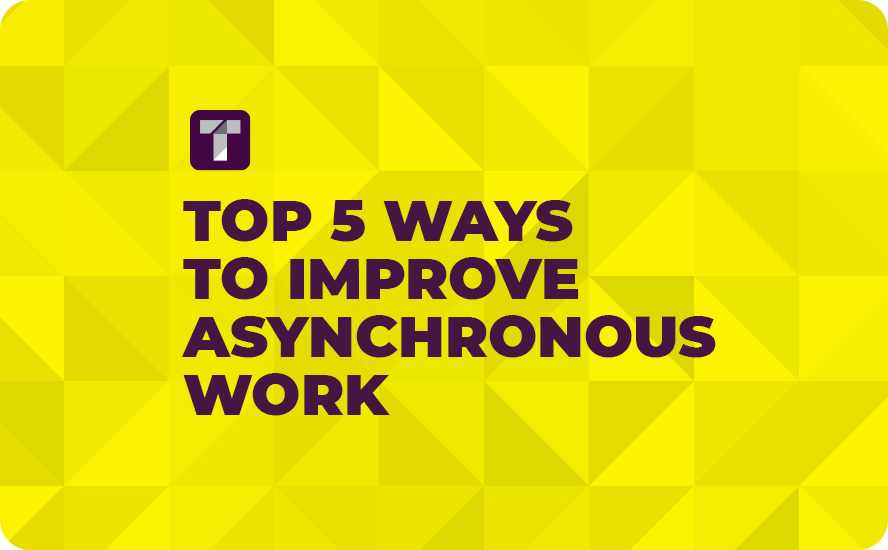Are you instituting a global remote workforce for your company? Are you looking for ways to improve the productivity of your global workforce? Asynchronous work – or asynchronous collaboration – may be the answer to your questions. With the advent and implementation of asynchronous work, many global companies are looking for it as an answer to their questions and we can help at TRUSS with a list of the Top 5 Ways to Improve Asynchronous Work.
Contact TRUSS today for more information on how we can help you hire global employees in Uzbekistan, Kazakhstan, and Georgia!
READ MORE: Check Out the TRUSS Global Team Onboarding Checklist
What Is Asynchronous Work and Collaboration?
Asynchronous work may be the perfect option for a global workforce and is even more widespread with many businesses converting to remote teams. With asynchronous collaboration your employees complete tasks and communicate with work colleagues on a more flexible timetable. Rather than have a strict schedule and strict work hours, employees work when it best fits their lifestyle and schedule – with a set expectation of task completion and communication. Asynchronous work reduces the need for in-person meetings, video conference calls, and phone calls. Those elements are replaced or supplemented by emails, instant messaging platforms like Slack or Google Chat, project management systems, and cloud-based document sharing like Google Workspace.
Here is a better look at how you can improve asynchronous work for your global team.
1. Set Clear Goals and Deadlines
Many companies that employ a synchronous work model put more focus on the time at work, employee hours, and daily productivity. With an asynchronous work model, companies put more emphasis on accomplishing goals and end deadlines. Global businesses that set clear goals and deadlines and allow employees to work on those projects as their schedule allows will see positive results.
2. Set Clear Guidelines for Collaboration
When your company adopts an asynchronous work model, not only is it important to set clear goals and deadlines, it is important to create clear guidelines for communication and collaboration. Goals and deadlines provide the what in this scenario – but guidelines help provide the how. Create clear guidelines on how teammates can collaborate, how tasks and projects are passed on to managers, how long employees have to reply, how to handle day-to-day operations, and more essential business processes. This will give structure to a remote and autonomous team that translates to deadlines met and improved production.

3. Use the Right Tools
The right tools can help you seamlessly integrate an asynchronous work model into your global workforce. Project management systems like – Monday, Wrike, Smartsheet, HubSpot, and Asana – will help you set clear deadlines and goals for your team and allow you to track progress. Instant messaging platforms like – Slack, Threads, Microsoft Teams, and more – allow employees to communicate directly with colleagues and provide group collaboration opportunities that may not work the same via email.
4. Allow for Autonomous Schedules
Global companies that employ autonomous schedules and remain goal oriented will see more success with an asynchronous model. Autonomous schedules allow employees to work on a schedule that best fits their lifestyle and does not hold them to a structured schedule with traditional work hours and scheduled breaks. This gives employees flexibility to work at times when they are the most productive and they can reply when it is convenient – as long as it is within a timeframe designated by managers.
5. Encourage Transparency
Transparent communication from start to finish of a project will help your team succeed and is even more valuable when provided in a single online location. Team members can track the status of a project in real time with minimal input from managers and can keep moving forward. Businesses that set clear and transparent guidelines for how projects are completed and ensure that everyone understands the proper way to accomplish tasks will see success with an asynchronous model.
READ MORE: Best Questions to Ask in an Interview When Hiring Remote Employees
How Can TRUSS Help Hire Remote Global Employees?
Companies that hope to install an asynchronous workforce model may find that it is the perfect option for a global remote workforce – and TRUSS can help you find global employees. We have a global team that can help you find, recruit and hire global talent in Central Asia. When you have added global employees to your remote team, TRUSS can serve as the employer of record in foreign countries and will help your company manage payroll, schedules, and human resources issues with an innovative and comprehensive platform.
Plan ahead for an asynchronous workforce with this list of the Top 5 Ways to Improve Asynchronous Work. Contact TRUSS today to learn more about our global hiring platform and prices!

